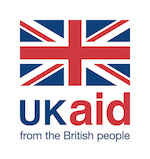Mobile money-enabled cash and voucher assistance (CVA) has the potential to offer transformational benefits to cash recipients, including digital and financial inclusion. With the rapid increase in digital delivery of CVA (in part due to COVID-19), and tightening of aid budgets, enhancing the user experience and maximising transformational benefits associated with digital and financial inclusion is more important than ever. Yet, these transformational benefits are not common outcomes of CVA programmes in humanitarian contexts as organisations focus on shorter term outcomes.
So how can humanitarian organisations and mobile money providers optimise their cash programming, enhance the user experience, and unlock the wide-ranging benefits of digital and financial inclusion?
Of course the answer is complicated and multi-faceted, and not always feasible within humanitarian contexts, but an important part of the solution is to adopt a user-centred approach when digitising CVA. It is only by designing with, and for, the most marginalised recipients, and understanding their perspectives, experiences and feedback that the benefits of mobile money-enabled CVA will be realised and equitable for all.
Applying human-centred design to digital cash programming
In 2019, GSMA’s Mobile for Humanitarian Innovation programme teamed up with Ground Truth Solutions to apply a human-centred design approach to understand the user journeys of Concern Worldwide’s cash recipients in Burundi. Following months of work and undertaking a rigorous methodological approach, consisting of both qualitative and quantitative tools, today we publish the findings.
The report covers the following themes:
Theme 1: Insights into cash recipient characteristics;
Theme 2: The main “touchpoints” along the user journey, and;
Theme 3: The factors that enhance and/or frustrate the user experience.
It concludes by offering considerations for stakeholders deploying digital cash programming in Burundi, as well as in other humanitarian contexts.
Personas: offering a first-person perspective
We used personas as a tool for stakeholders to understand how and why end users’ experiences diverged. Through in-depth interviews, we identified common characteristics among users to develop “personas” (such as Adja), who represented these typical types of users. The report presents these personas’ user journey maps to better identify what enhanced user journeys or frustrated users when they received mobile money-enabled CVA.
“I am 39 years old from Murama, Kirundo province, of the Batwa tribe [an ethnic minority group]. I did not attend school and cannot read or write. I live with my husband and 9 children – 3 of the children are orphans that we have taken in. My husband attended a Catholic Church basic training to read and write, so he can know some numbers, and he can even use a phone. We live in someone else’s house, because for the time being, someone is lending me their house to stay in. No one in my family owns a phone and I have never used one. I use the SIM card that Concern gave me to get cash on distribution days, but not for other things. I worry that if I do, the SIM card could be stolen.”
Adja (Persona)
Factors that enhanced and frustrated the user experience
User journeys are enhanced when:
1. Users have someone they can trust at their side
Adja: “If I need help, I turn to the maman lumière [Community-selected representatives who work with Concern Worldwide to support cash recipients]. She is the one who helps us count the cash to see if it is the exact amount, and she deals with it very well without removing a single coin.”
2. Assistance is transparent and accessible, and issues are swiftly dealt with
Adja: “I like that we receive money as a group because a neighbour might not be happy to see me shopping when they have nothing to eat. This way, everyone receives at the same time.”
3. Cash assistance is built into longer-term financial support
Many users mentioned the importance of financial savings opportunities – such as participating in local savings associations– to meet longer-term goals.
User journeys are frustrated when:
1. Users do not own or have access to a mobile phone
Adja: “I stuck the SIM card [with] my ID card, I put them in a plastic bag in a pot and covered it. Because they had not given us phones, I was not sure how to see a message to know if money was there.”
2. The process is not adequately explained
Adja: “They told us that if we have no phones, we have to keep the SIM card carefully and not put it in other people’s phones. Because we had no phones, we didn’t really know much about the SIM cards. After I went home, I did nothing with it because we were forbidden.”
3. Users must shoulder additional costs to access their assistance
Some users needed to pay additional costs for transportation to reach cash out points.
4. Users are not encouraged to use the SIM card
Users were told not to use their SIM card for anything other than the mobile money distributions, reducing the potential to increase familiarity with using mobile phones.
5. Users wait a long time between initial targeting and receiving the cash assistance
Some users waited up to 5 months between targeting and receiving cash assistance, whilst procedures and checks were completed.
To see more user journeys like Adja’s and understand how different recipients experience cash programming, explore the findings.
Future insights
In the coming weeks and months, we’ll be posting more blogs sharing key insights from the report, and lessons from the experience, that we hope can inspire actors operating in humanitarian contexts to adopt human-centred design approaches to ensure digital programming can deliver wide-ranging benefits for end users, whilst reducing risks.



